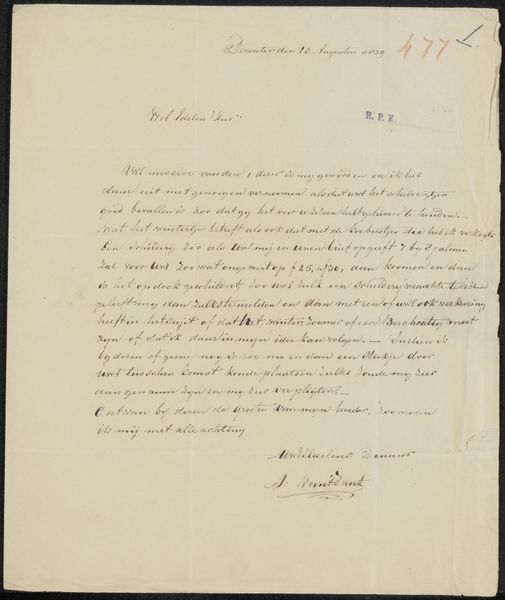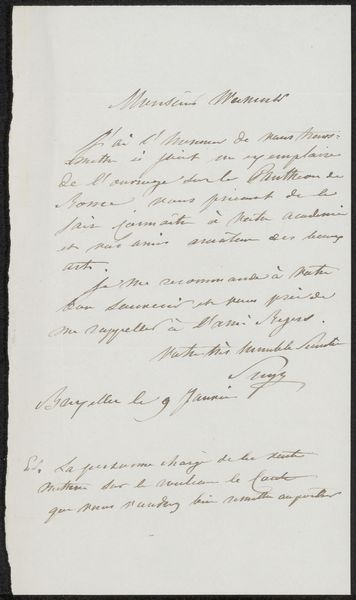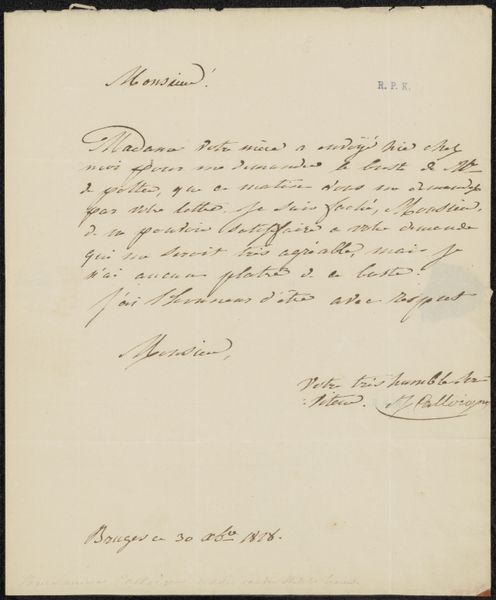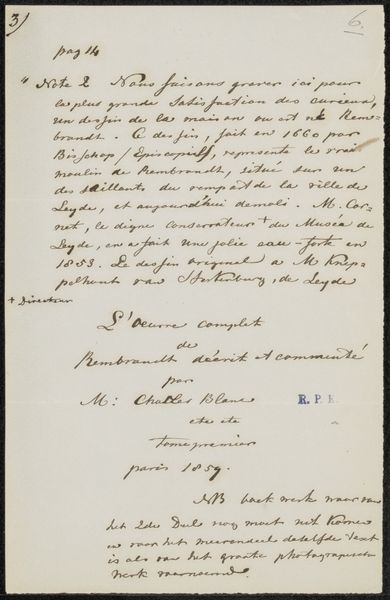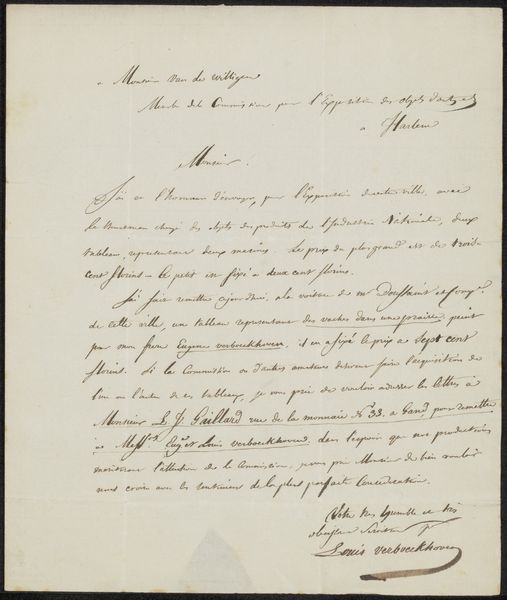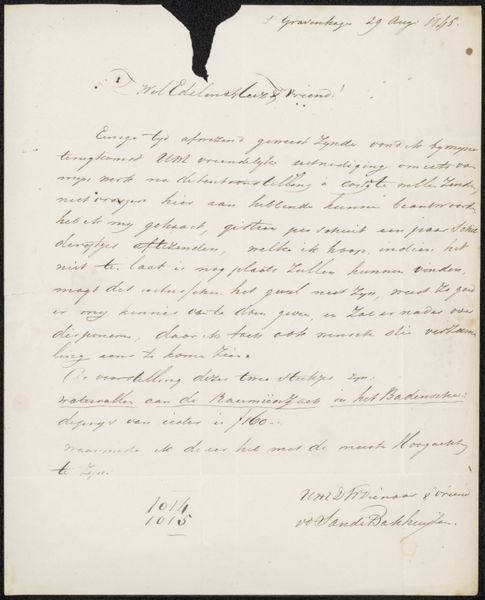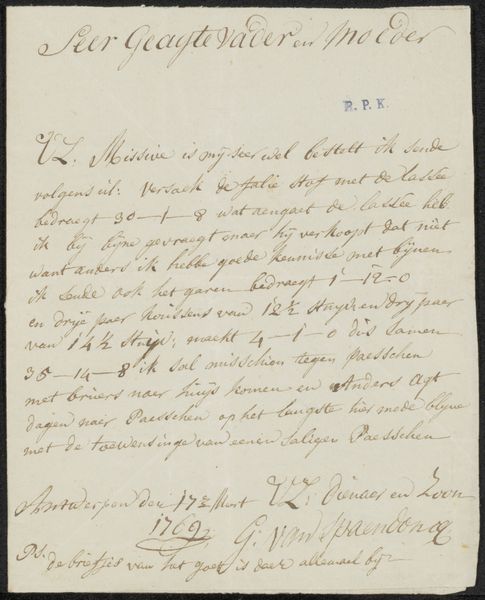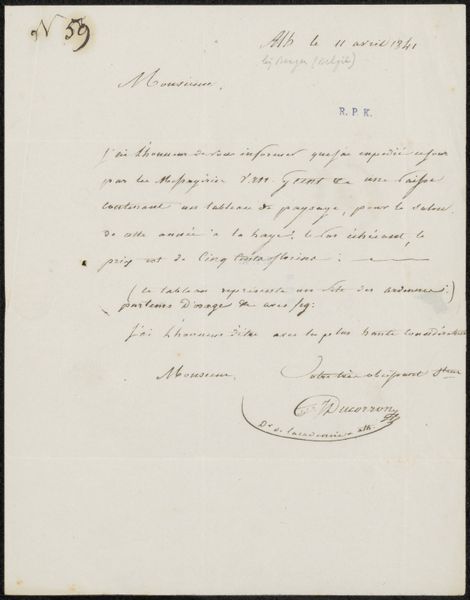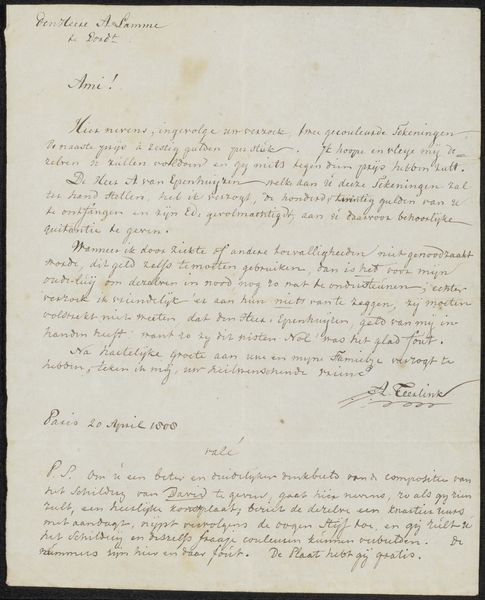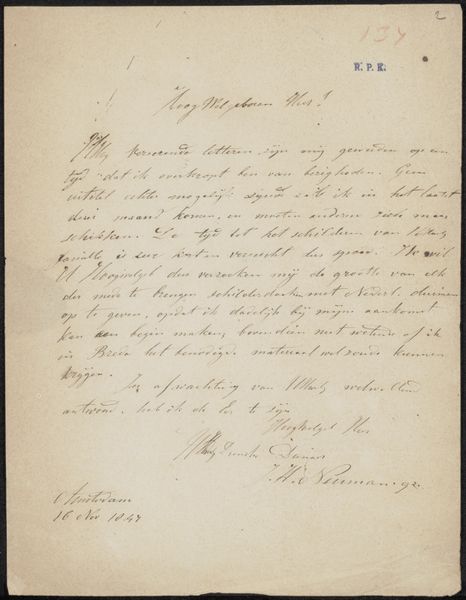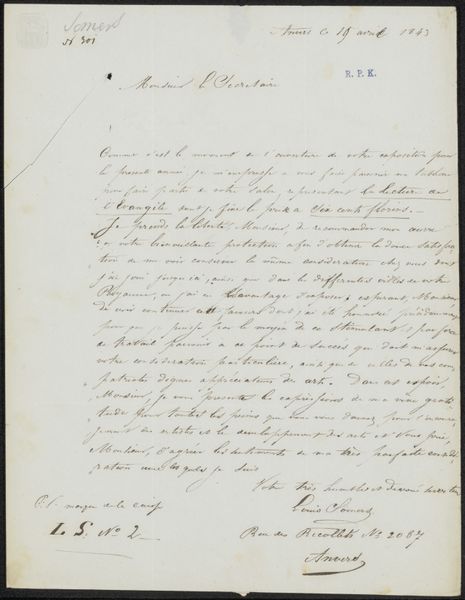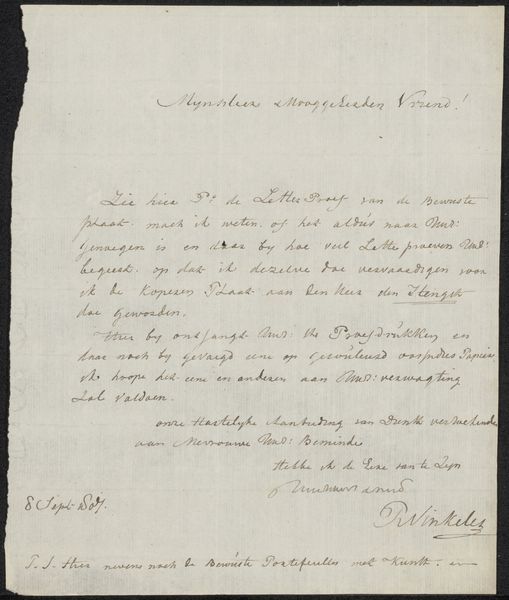
drawing, paper, ink, pen
#
drawing
#
pen sketch
#
sketch book
#
hand drawn type
#
paper
#
personal sketchbook
#
ink
#
ink drawing experimentation
#
pen-ink sketch
#
ink colored
#
pen work
#
sketchbook drawing
#
pen
#
sketchbook art
#
calligraphy
Copyright: Rijks Museum: Open Domain
Editor: Here we have "Brief aan onbekend," or "Letter to an Unknown" by Jean-Baptiste Delbecq, likely created between 1813 and 1831. It's an ink drawing on paper. It gives the impression of something quite formal, maybe even a little…official. What strikes you about it? Curator: I'm immediately drawn to the materiality of this piece. Look at the paper itself—the signs of wear and age tell a story. How does the aging paper inform our understanding? And then consider the ink: the consistency, the way it bleeds into the paper in some areas versus the sharp lines in others. Delbecq's labor is evident in the act of writing itself. It begs the question: was the act of writing itself more important than the specific content? Editor: So you're focusing on the physical materials and the writing process...but how does that change our perception of its meaning? Curator: I believe we must also consider who had access to these materials – paper, ink – at that time. How does this reflect the distribution of power and knowledge in society? This isn’t just about aesthetics. How does this specific context shed light on the culture of botanical societies? What was Delbecq’s position within that structure, as the "Secretary?" Editor: That's interesting. It makes you think about the hidden aspects of the artwork. Curator: Exactly. By investigating materials, processes, and production methods, we question not only what art is but also who gets to make it and consume it. The act of handwriting suggests labor, time, a deliberate process… something largely absent from our modern forms of communication. Editor: It almost romanticizes a task so ordinary like writing, when the materials give it more depth. Curator: Precisely. It prompts us to reconsider value and reassess assumptions about “high” and “low” art by exploring labor. The materials and process give it value that transcends the content of the letter itself.
Comments
No comments
Be the first to comment and join the conversation on the ultimate creative platform.
